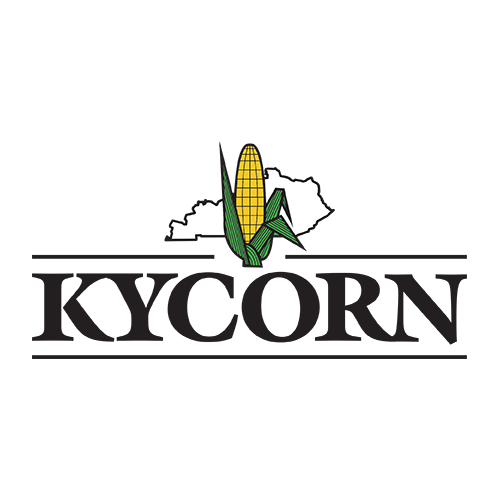Kentucky's Corn Industry
Corn is a leading crop in Kentucky along with soybeans. But don’t confuse field corn with sweet corn. The corn enjoyed as a vegetable is only grown on about 1300 acres (according to the 2022 Census of Agriculture) compared to more than 1 million acres dedicated to field corn.
Field corn production in Kentucky for 2023 was reported at more than 280 million bushels. The previous record was in 2021 at 276 million bushels. The average yield was estimated at 187 bushels per acre. Acres for harvest as grain were estimated at 1.5 million acres. Sales for 2023 totaled $1.38 billion, bringing more money than any other commodity, and only slightly down from the 2022 total of 1.44 billion.
The 2023 top 5 Corn (grain) producing counties are Christian, Graves, Union, Henderson, and Daviess.
Between 40 and 50% of the Kentucky corn crop is fed to livestock. Poultry in Kentucky consumes about 45 million bushels alone. Beef and dairy cattle and hogs are also important Kentucky corn consumers.
About 35 million bushels of Kentucky corn is used annually to produce fuel ethanol. The corn protein, oil, and fiber not needed for ethanol are sold for poultry and livestock feed, which are called distillers grains. Each bushel of corn can produce 2.8 gallons of ethanol, 17 pounds of livestock feed (distillers grains), and 18 pounds of carbon dioxide. The carbon dioxide can be captured to make dry ice or carbonated beverages.
Another 15-20 million bushels of corn are utilized by Kentucky's bourbon and spirits industry.
(Source: Kentucky Distillers Association)
About $303 million in Kentucky corn were exported overseas in 2022 (Source: ERS). Any additional corn is stored or fed to on-farm livestock.
Kentucky’s family corn farmers are producing twice as much corn as they did in the early 1900s—on two-thirds less land.95% of Kentucky’s corn farms are family-owned, and many of the remaining 5% are partnerships between family members.
Source: National Agriculture Statistics Service and Economic Research Commission
Latest News
Abstaining from early-season weed control is costly for corn growers (12/26)
A mixed bag of weather events has harvest numbers varying. (10/3)
UK graduate student named National Corn Growers Association Research Ambassador (9/1)
University of Kentucky student’s national award-winning cover crop research is revolutionizing corn production (December 2023)
Maker’s Mark Fills the World’s First Barrel of Bourbon with ‘Certified Regenified’ Corn and Wheat (December 2023)
University of Kentucky researcher is a driving force in tar spot research for corn producers (November 2023)
Kentucky Corn is Grown for Feed, Food, Fuel, & Fun
There are three types of corn grown in Kentucky: field corn, popcorn, and sweet corn.
Field corn is the most popular type of corn grown by our farmers since it can be used for livestock feed, ground into meal and flour for human food, distilled into alcohol (fuel and beverage), or processed to be used in thousands of products.
Corn was discovered in North America. Early native Americans domesticated the corn plant and eventually shared their seeds and knowledge with European visitors and settlers. Christopher Columbus took corn back with him to Europe in 1492, and we are all aware that corn was an important crop for the Pilgrims in the early 1600s. Corn is now grown world-wide.
It takes a corn plant between 3 and 4 months to grow and mature. Most field corn is planted in the spring and harvested in the early fall. A combine harvests field corn when it is dry enough for storage. Corn is then transported to the markets that need it.
About half of the field corn grown in Kentucky is fed to livestock. Chickens eat the most Kentucky field corn. Kentucky also has several food processing companies that use food-grade corn, many distilleries, and an ethanol plant in Hopkinsville that turns corn into fuel. Corn that is not used in Kentucky is exported to other states or across the world.



